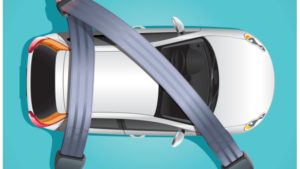
How often do you feel dejected when, in spite of having a comprehensive car insurance policy, you do not get the total cost of repairs in a claim? Many times, I bet. Though your comprehensive car insurance policy pays for the damages suffered by your car, the claim settlement is done after making deductions for depreciation of your car’s parts. That is why, when you make a claim, you settle a portion of the claim from your pockets. Do you like it?
Of course, you don’t. But is there a solution? Yes, a Bumper to Bumper policy, also called a Zero Depreciation Policy, is your solution to this dilemma. Do you know what it is? Let’s find out:
What is Bumper to Bumper policy?
A Bumper to Bumper cover or a Zero Depreciation cover protects the value of your car’s parts from the effects of depreciation. When you make a claim in your Bumper to Bumper policy, the claim paid is not deducted for the relevant depreciation. Instead, you get the complete cost of repairs done to your car’s parts. Let’s see how this policy works:

You saved a whopping Rs.6100 on repair costs through a Bumper to Bumper cover. Isn’t it amazing?
Is a Bumper to Bumper cover policy effective?
Well, if you look at the above savings, you wouldn’t need any more answers. From the financial point of view, a Bumper to Bumper policy saves a lot of money which would otherwise come out of your pockets. So, a Bumper to Bumper policy is definitely effective. Here are other reasons to fortify this statement:
- The schedule of depreciation is high in car insurance policies
The rate of depreciation associated with different parts of the car is quite considerable and it might end up burning a hole in your pockets. If you don’t believe me, see for yourself. Here are the depreciation rates on different parts of your car:
So, you can imagine the proportion of the cost you would have to bear when your car goes for a repair!

- Parts of a new or a luxury car are quite expensive
A Bumper to Bumper policy is effective especially in case of new cars whose parts are very expensive. When you have already invested your savings in buying the car, paying the cost of repairs out of your pockets seems like a burden. In these instances, a zero depreciation policy is very effective. Moreover, if you are the proud owner of a luxury car or a high-end sedan, meeting the repair costs out of your pockets would be financially draining. Here is where a Bumper to Bumper cover is important.
Any more doubt on the effectiveness of a Bumper to Bumper cover? You can also read Are Car Insurance riders worth buying?
Things to remember for a Bumper to Bumper policy
Though a Bumper to Bumper policy provides a very effective cover, here are some things which you should remember:
-
- This policy is usually available for cars not older than 5 years. For older cars, you cannot avail a Bumper to Bumper policy.
- You have to pay an additional premium for choosing a Bumper to Bumper cover. This premium is, usually, 10% to 20% higher than the basic premium.
- There is no separate Bumper to Bumper policy. You can convert your car insurance policy to a Bumper to Bumper cover simply by choosing the zero depreciation add-on with your basic policy.
- There are exclusions for this cover. Normal wear and tear of your car’s parts, mechanical breakdowns, consequential loss, etc. are not covered.
- There is a limit to the number of claims made under a Bumper to Bumper cover throughout the complete policy tenure. This limit varies across different plans.
So, now you know what a Bumper to Bumper policy is, what it covers and whether it is effective. If you buy a new car or have a high-end car, don’t forget to add a Zero depreciation add-on and ensure a higher coverage.
Read more about All you need to know about car insurance policies in India
Read more about Anatomy of car insurance policies




























